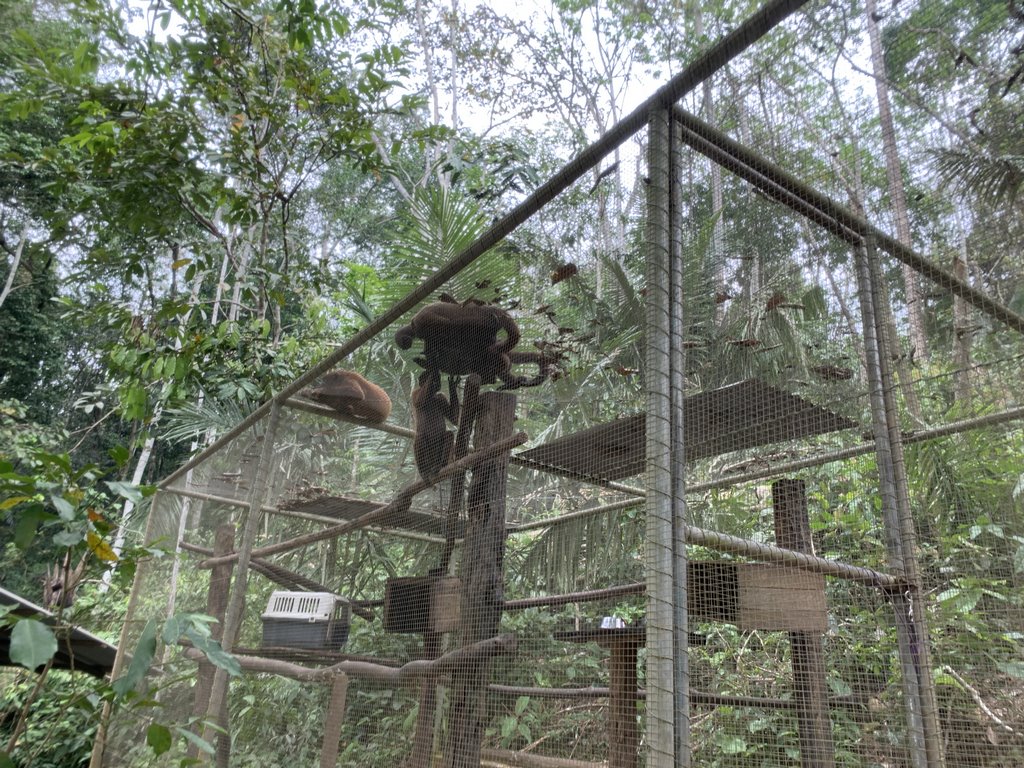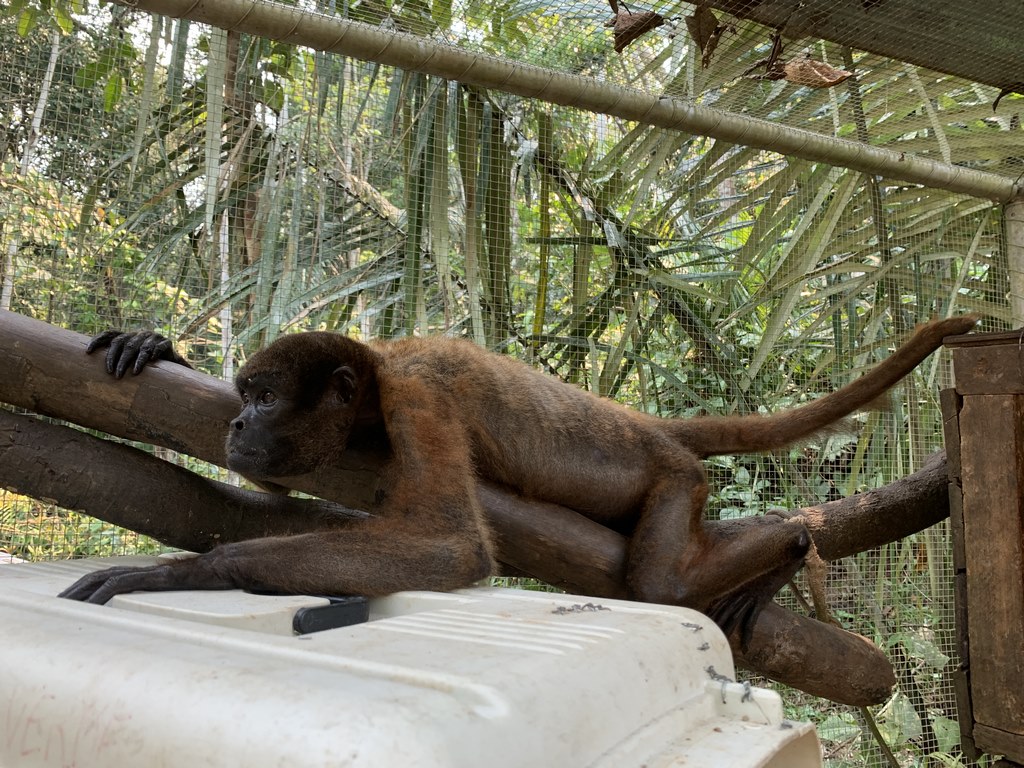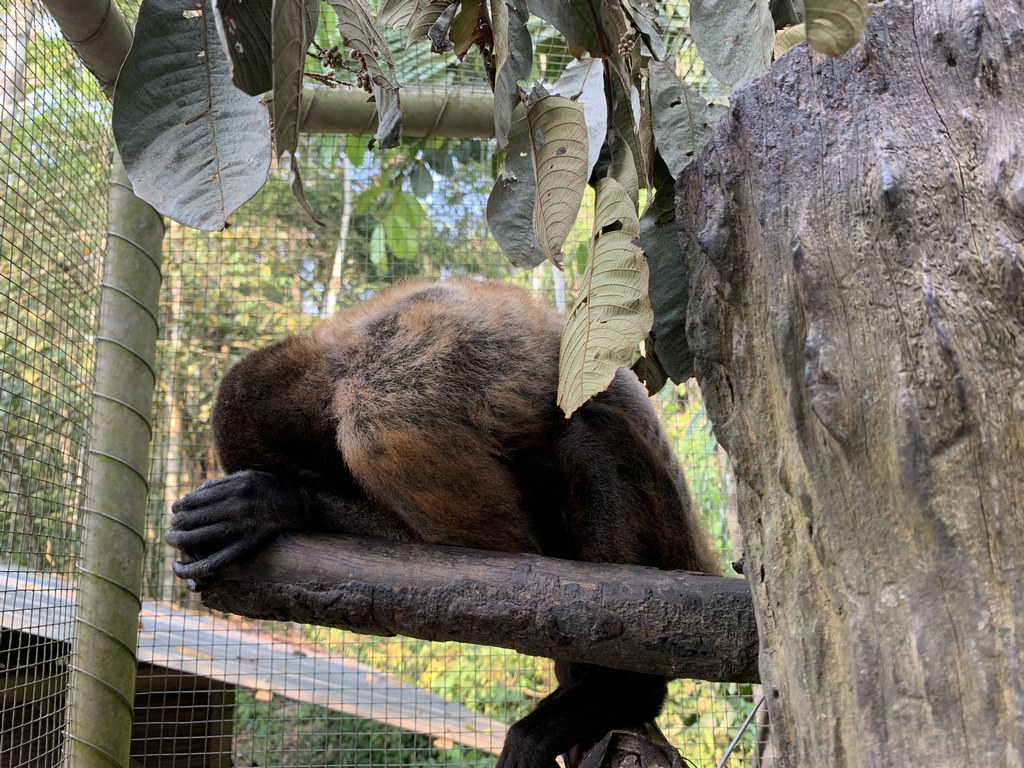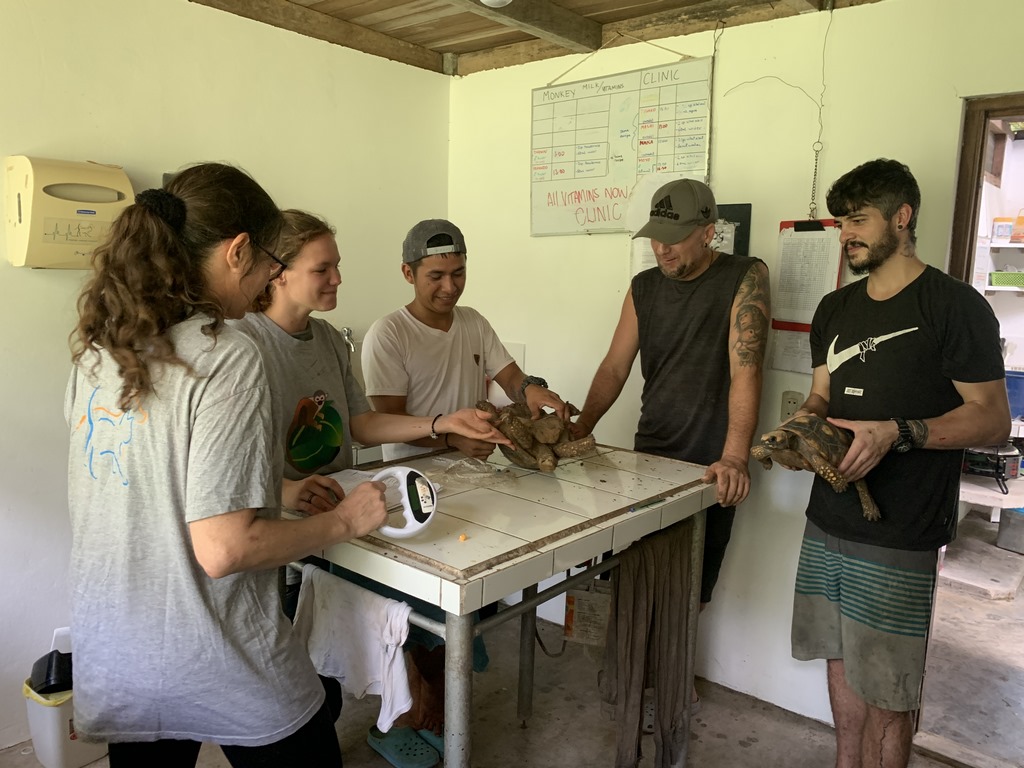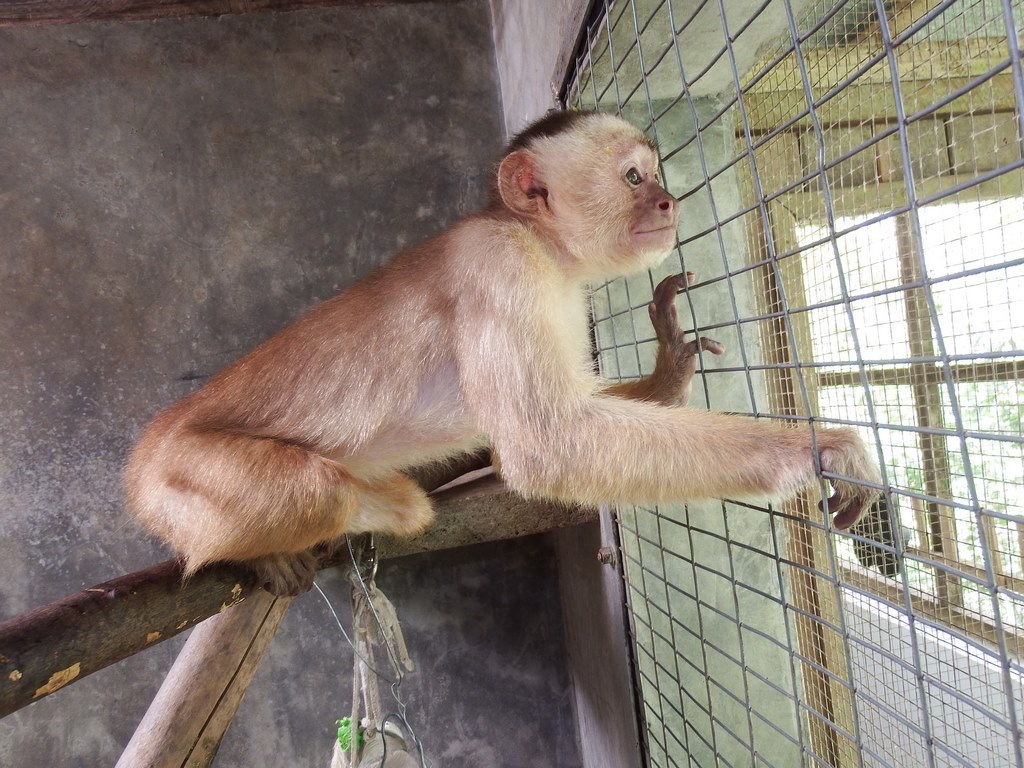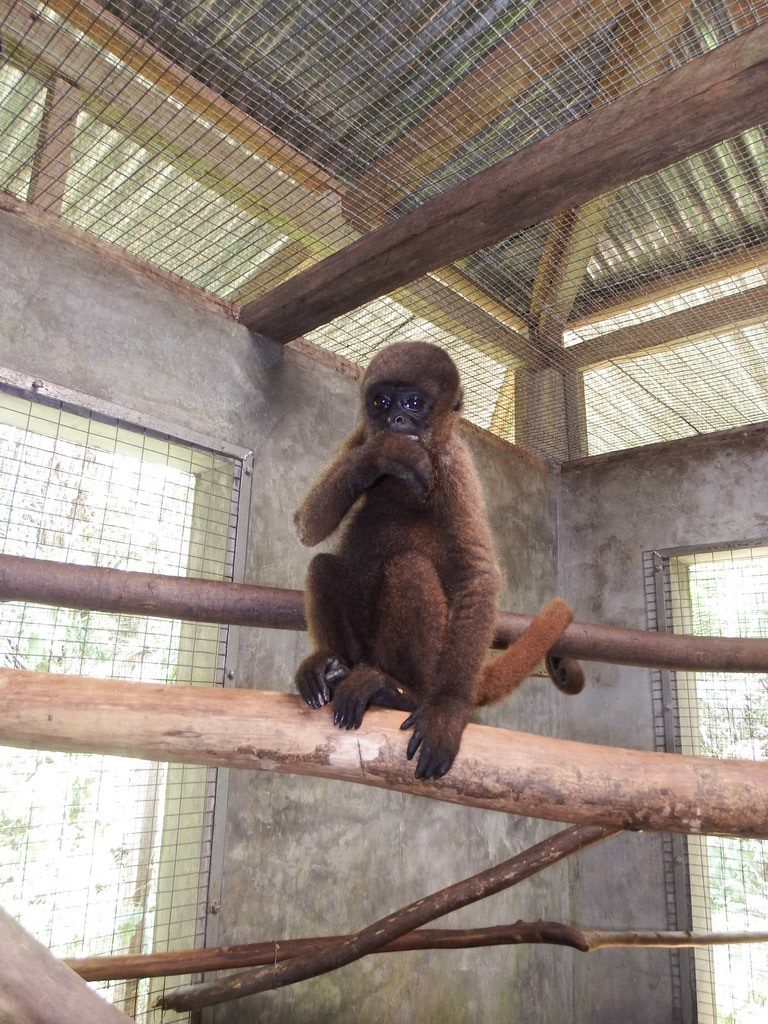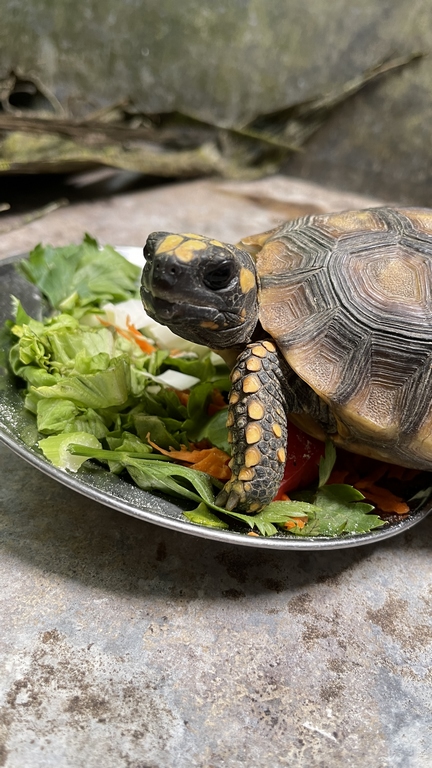It is always remarkable how much can be achieved with such few volunteers. Although we were not fortunate enough to welcome any new volunteers in September, we did manage to accept more animals from the ministry of Flora and fauna. Read on to see what some of the existing residents have been up to and who will soon be joining their ranks after initial health assessment and quarantine.
 Animals
Animals

Maloha the woolly monkey climbing out of Pepe 
Maloha playing in the trees 
Maloha on the outside of Pepe cage 
Maloha debating weather to go out or not 
Maloha (female Humboldts woolly monkey) getting released from Pepe cage 
Dilana (female Spix’s white fronted capuchin) playing with Biko 
Dilana exploring the trees 
Dilana hanging out with Ezra (both young female Spix’s white fronted capuchin) 
Dilana outside 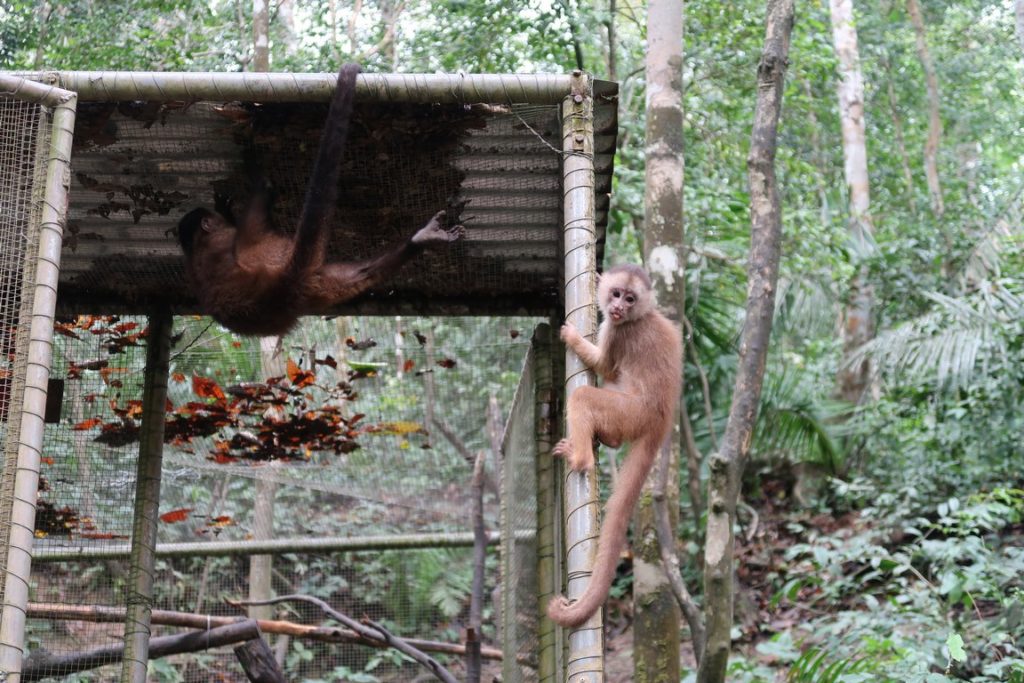
Dilanas (female Spix’s white fronted capuchin) first taste of freedom!
Last month we talked about Dilana, a juvenile female Spix´’s white fronted capuchin monkey and Maloha, a young female Humboldt’s woolly monkey moving to Pepe enclosure. This stay was short lived and as the month started the door was opened to allow both monkeys the chance to experience the greater space available to them in semi-captivity. Both monkeys were apprehensive to enjoy the freedom on offer, and, although a few inquisitive spider monkeys joined them briefly in their enclosure, our first attempt to entice them outside was unsuccessful. Releasing any animal can be a testing time and is not something that is left to chance. As there was nobody available to observe the monkeys we waited until the next day to try again. Although both monkeys had initial reservations, as the month came to a close Dilana and Maloha had adapted well to their newfound freedom with Maloha often seen playing with the other monkeys of our woolly monkey troop and Dilana regularly seen in the company of Nando and the recently released Kiano (both males of the same species as Dilana) or interacting with one of the many other juvenile monkeys.
After spending a little over a month in the SUST Orphan Animal Clinic, Moyo (adult male Humboldts woolly monkey) moved into Lulu enclosure to enjoy the option of more sun and fresh air. Another benefit of the move has been that Moyo is now able to directly socialise with so many more of the other woolly monkeys through the mesh of the enclosure. The Lulu enclosure roof now is becoming a congregation place for eight or nine woolly monkeys at a time. At his final weight check for the month Moyo had gained a massive 15% on his previous weight in the clinic. His newly grown fur has a beautiful shine to it showing how much his health has improved.
You might remember another monkey suffering from the effects of Prosthenorchis Elegans a few months ago; Yanamayo. This large headed capuchin male had lost virtually all his hair and looked to be wasting away. Yanamayo now looks like a new monkey with his hair growing back incredibly and being of a more realistic stature as expected. While in the SUSTOAH Yanamayo was approachable and easy to deal with and now his behaviour has also returned to slightly more troublesome as you would anticipate from a capuchin monkey raised by humans. Although it has been at times painful to see any animal go through this discomfort, it is so rewarding in seeing a remarkable recovery such as this.
Our numbers were briefly bolstered with Marlon taking the lead for a traditional volunteer favourite that occurred again this month with all of the yellow footed tortoises in our reptile enclosure being captured for a general check-up and deparasitation. The reptile enclosure is another construction suffering from the ever-present humidity and in need of some maintenance. Therefore, it was necessary to catch and count the tortoises to see if all were present and accounted for. All tortoises were then moved to the Xena enclosure where they can safely enjoy all the regrowth that is present in an enclosure that has been uninhabited for a majority of the year after our peccary group was moved the purpose built Noroc enclosure.

Ringo when he arrived in 2016 
Ringo the baby deer 
Rabito in the clinic garden in 2016 
Ringo (red brocket deer) walking around in Pepito enclosure 
Douwe treating Ringo in Pepito enclosure 
Ringo (red brocket deer) looking healthy 
Rabito (red brocket deer) in Pepito enclosure 
Ringo and Rabito snackin on some food
For some they were a tour highlight, interacting directly and lavishing attention. For others (prior to enclosure modifications) a gauntlet to be ventured into with caution and reverie, dodging a sometimes well-timed swing of small but intimidating antlers. Regardless of your feelings of being directly in an enclosure with them, it was a sad day when Kayla found Rabito (Red brocket deer) laying prone and being unresponsive to the food on offer. Douwe ensured Rabito was hydrated and made inquiries with our national and international team of veterinarians as to possible causes and treatments. Rabito’s demise was swift and on further investigation he was found to have died from internal intestinalbleeding, which we surmised to have been caused by his overenthusiastic enclosure companion Ringo. This deduction proved incorrect as less than a week later we fare welled Ringo who also succumbed to internal intestinal bleeding. After excluding food items as an issue, an inconclusive necropsy and further consultation internationally, we believe a virus or bacteria may have been the cause of this untimely passing for both deer.
Otis, one of our more senior Ma´s night monkeys was seen one morning investigating volunteer movements. While not completely out of character for a nocturnal monkey, it was a great opportunity to catch him for general health and weight check. It was immediately evident that Otis had lost a great deal of weight in the previous few months. Without any health issues evident, Otis is now spending some time in Pepe enclosure where he is enjoying the best diet available while he gains back some of his former condition and size.
 SUST Animal Orphan Hospital
SUST Animal Orphan Hospital
Nando the male Spix´ white fronted capuchin monkey had a brief stay in the clinic with a wound on his knee. It wasn’t troubling him and appeared uninfected, but due to its location it was being reopened daily while staying outside. Nando is a very active social monkey never far from ‘trouble’, so the intention of his stay was to give him some quiet time to recuperate. It can be interesting to observe the change in behaviour of some animals when their freedom is taken from them. Within days Nando went from a content monkey to one bent on destroying anything in his enclosure, be it enrichment, branches for climbing on, or even the box offered as sleeping quarters. Nando was released back to the outside world after his short time inside and although the wound on his knee is still apparent it is healing and has not dampened his spirits. He can be seen the entire the day interacting and playing throughout Esperanza Verde.
The ministry of Flora and Fauna visited again this month and with them they brought enough animals to fill the SUSTOAH to capacity. Normally these animals would go to our new purpose-built quarantine but with such limited volunteer numbers the SUSTOAH is utilised to its full potential ensuring full animal care with the least disruption to essential daily routines.
Joining Esperanza Verde this month:
- An Orange winged Amazon parrot, Berto, with its wing feathers dramatically cut. It will have a few more weeks in quarantine ensuring it is unlikely to create any health issues with existing birds before being introduced to a larger enclosure.
- A young male woolly monkey, Panchin, who has been a pet for about a year and certainly is very vocal in demonstrating he isn’t getting the personal attention he has become accustomed to. He will learn soon enough from our resident woolly monkey group, that he is one of a kind…
- A baby black eared opossum of only 3 weeks of age. As he is very young, this opossum will spend the next few months in the SUSTOAH until he is large enough to be released.
- A male capybara about a year old, Bronco. Already this wee man weighs 13 kg, and can grow to be 60 kg plus. After a short stay in the SUSTOAH he moved to the Momo enclosure that surrounds the assistant managers residence. Bronco has been a pet for most of his life and unfortunately can never be released. He won’t have the necessary skills to survive in the wild whereas in Momo enclosure he will get more personal attention and as well as his own pond to reside in, till it is time to move him to a bigger enclosure.
- A small yellow footed tortoise, which was on its way to enter a plane to Lima. We hope we will be able to release him as soon as he passed his quarantine time.
- A very small yellow spotted river turtle. Both the tortoise and turtle are short term visitors, and after a clean bill of health will be released into the relative safety of the selva dormida.
 Construction and other
Construction and other
Douwe, Geyler and the small team of workers at their disposal directly spend the better part of two days every week ensuring volunteers and animals alike have sufficient food. It is frequently an unsung task, yet one they undertake every week without complaint, regardless of the occasionally relentless heat or similarly unyielding humidity. It involves harvesting bananas, papaya, yuka, among others, and carry them all to the bodega.

New cage named “Wayra” first stage 
Working on mainfloor volo house 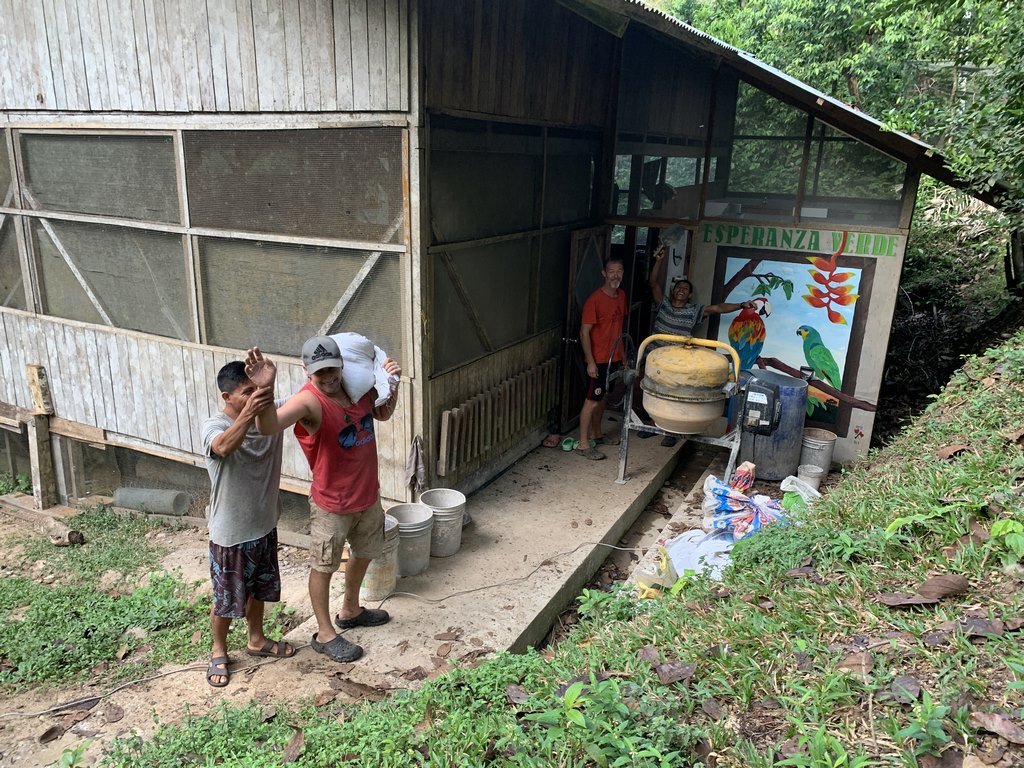
Volo house floor 
Volo house floor 
Geiler doing cement floor in volo house 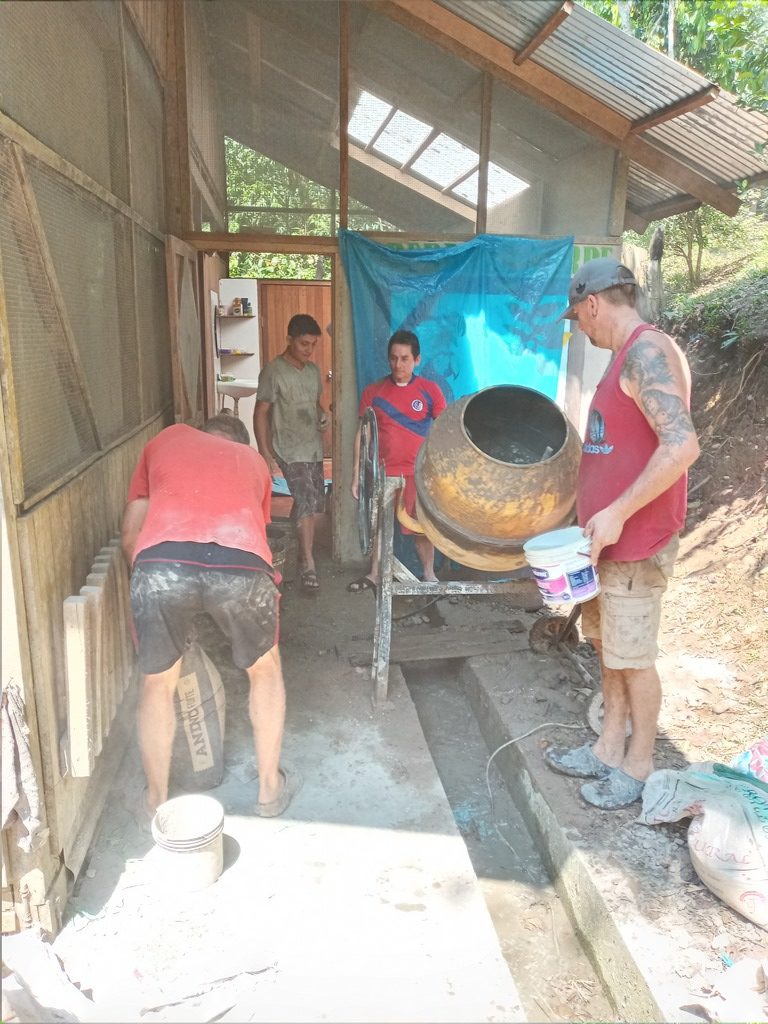
All the guys working together to fix the volo house floor! 
Douwe and Geiler, working hard or hardly working 😉
The loss of almost two days every week doesn’t seem to curb the enthusiasm or the ability to complete other tasks as they come to hand. September saw not just one room receiving a new cement floor in the volunteer house, but also the living area got a spruce up along with the necessary new cement floor. This was the last piece of the puzzle. Over the previous few months the entire volunteer house has received a new floor, replacement piles and a general tidy making it a fantastic revitalised home away from home for new volunteers.



